Achieving resilience for all requires funding disability inclusion in DRR
News | October 10, 2025
On International Day for Disaster Risk Reduction (DRR) 2025, the call to “fund resilience, not disasters” is more urgent than ever. This means investing in inclusive approaches that address the barriers facing those most at risk. In this article we share our 3 top tips to investing in disability-inclusive DRR.
DRR efforts must recognise, invest, and budget for efforts to address the barriers experienced by those with heightened disaster risks – such as people with disabilities, who are up to four times more likely to be injured or killed during a disaster.
People with disabilities are often excluded from DRR processes due to stigma, inaccessible environments, and lack of awareness among authorities. This exclusion heightens their risk- not because of their disabilities, but because of systemic barriers. According to the UNDRR’s 2023 Global Survey, 84% of people with disabilities lack a personal disaster preparedness plan, and only 8% feel their local DRR plans address their needs.
When DRR financing ignores accessibility, it perpetuates these risks. Investing in disability-inclusive DRR ensures that projects, budgets, shock-responsive social protection mechanisms, and early warnings consider the requirements of those with the highest disaster risks, and develop inclusive approaches to strengthen resilience and recover from disaster shocks.
Here’s our top 3 tips on how to put this into practice:
1. Budget for disability inclusion in DRR projects
Accessibility and inclusion must be non-negotiable, core criteria in DRR financing, as disaster resilience is only meaningful when everyone is included and can benefit equally.
When developing a DRR project budget, ensure it considers the heightened disaster risks and barriers experienced by people with disabilities, and has adequate budget to sufficiently address these barriers.
We suggest budgeting for the following key activities and practices:
- Invest in disability awareness raising for staff and volunteers – by working with OPDs and ensuring staff understand the historic discrimination faced by people with disabilities, all types of barriers that limit possibilities to engage in DRR activities, and how that can lead to unequal and negative outcomes in DRR contexts.
- a disability barriers assessment or inclusive community risk assessment – holding focus group discussions with people with disabilities to understand what barriers they experience, and how to address or remove these barriers to enable people with disabilities to participate equally in preparedness activities.
- accessible early warning efforts – ensure that early warning messages are communicated in multiple accessible formats (such as picture formats, plain language, sign language, both visual and verbal alerts, captioned videos or TV announcements, etc.), and tested by people with disabilities to ensure they are accessible.
- workshops or self-help group trainings for people with disabilities – to develop their own personalised preparedness plans which considers their unique disability needs and heightened risks. Ensure you involve costs to engage OPDs to help facilitate this activity and identify people with disabilities to participate.
- advocacy and influencing activities – such as for meaningful engagement of people with disabilities in DRR policies and practices (such as having mandated roles in disaster management committees, or supporting OPDs with their advocacy efforts).
- reasonable accommodations – it is important to budget 3-5% of the overall project for reasonable accommodations (RAs). RAs are specific modifications or supports provided to people with disabilities based on their needs (such as sign language interpretation or materials in accessible formats) and can be identified by conducting a disability barriers assessment. Ensure that all project activities have a RA budget line.
- OPD partnerships – partnering with Organisations of Persons with Disabilities (OPDs) is essential to understand and develop solutions to remove the barriers that heighten disaster risks for people with disabilities. It is important to budget for meaningful OPD engagement from the very start of the project design phase.
Bangladesh Case Study
CBM Global’s DiDRR project in Bangladesh, in partnership with Caritas Bangladesh and Disabled Child Foundation, demonstrates the benefits of investing in resilience looks. Previously, people with disabilities were excluded from disaster management committees and community risk assessments. The project has addressed heightened disaster risks for people with disabilities and removed barriers, such as:
Conducting inclusive community risk assessments which enabled people with disabilities to directly identify barriers, and develop solutions with the community through DRR action plans.
Providing reasonable accommodations, such as temporary ramps and handrails, sign language interpreters, and travel allowances so people with disabilities could participate meaningfully in DRR trainings and meetings.
Producing training materials in multiple accessible formats (e.g., pictorial flip charts and picture books, audio, video, sign language).
Retrofitting cyclone shelters with ramps and accessible washrooms, based on recommendations from people with disabilities.
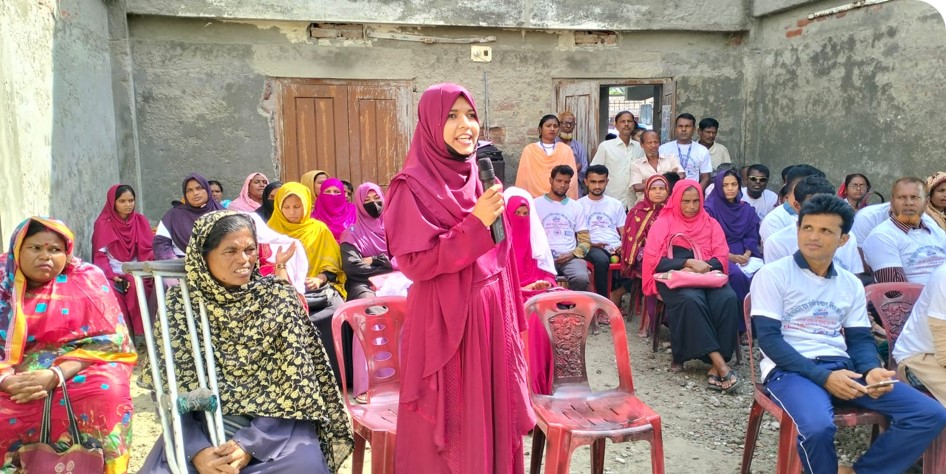
Watch this video: A safer, more resilient Bangladesh through disability inclusive disaster risk reduction
2. Invest in, and advocate for shock-responsive social protection mechanisms that address disability extra costs
Social protection systems need to be disability-inclusive in order to effectively respond to disaster shocks and reduce the economic and social impacts of disasters. However, they often fail to take into consideration the extra costs associated with having a disability.
People with disabilities and their families require at least an additional 40% to the average income to have the same standard of living as a household without disabilities, as they need incur extra costs associated with having a disability – such as repairing assistive devices which may be broken during a disaster, frequent access to medical consults, rehabilitation, and mental health counselling services, access to interpreters or support workers, and higher medication costs. These are essential needs for people with disabilities to adapt and respond to disaster shocks.
You can play an important role in advocating to governments for the need for inclusive shock-responsive social protection systems by advocating for increased payments for people with disabilities and their families, to ensure cash and voucher assistance (CVA) is tailored to meet the increase costs associated with having a disability.
Our research on the extra costs of disability in humanitarian contexts within Burkina Faso found that inclusive social protection systems, such as cash transfer values, need to be higher for households with people with disabilities, to ensure they can cover extra costs of disability and have enough cash remaining to buy the same amount of food and other essential items as everyone else. This assists people with disabilities to recover from disaster shocks and reduce their heightened disaster risks, strengthening resilience.
Philippines Case Study
For example, during the aftermath of Severe Tropical Storm Trami (Kristine), CBM Global implemented the multi-purpose cash assistance program to communities affected by the storm. This program provided people with disabilities with an additional top-up payment to address the additional disability costs.
The top-up amount of cash assistance was based on the cash transfer value recommended by the Cash Working Group, where CBM Global is a member. The transfer value was calculated based on the Minimum Expenditure Basket (MEB) and disability extra costs computation for the region shared by members of the Cash Working Group.
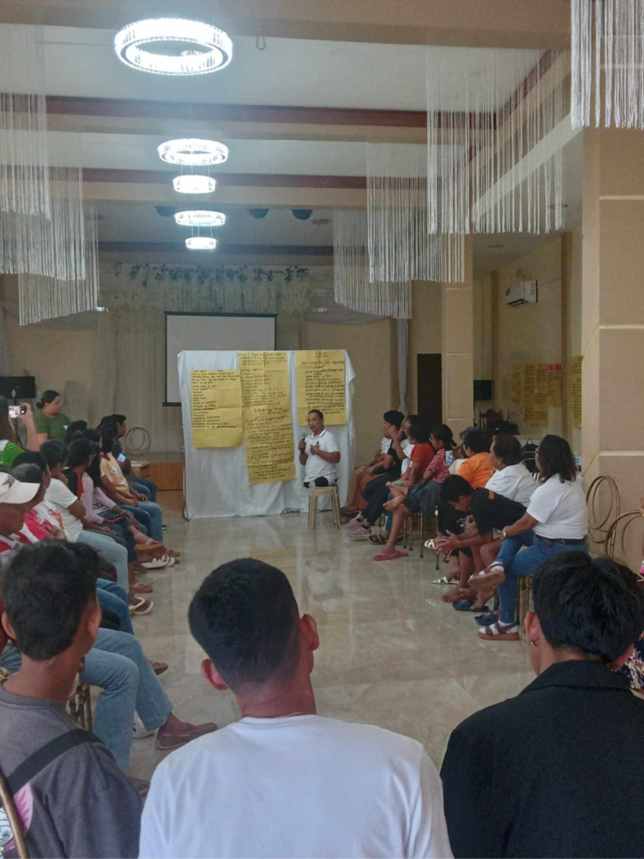
3. Invest in, and scale-up disability-inclusive early warning systems
Early warning systems (EWS) and forecast-based financing of early actions aims to reduce the impact of predicted extreme weather events on at-risk populations by linking forecast triggers to pre-defined actions ahead of a forecasted weather event. Yet EWS and early warning messages are often inaccessible for people with disabilities, which prevents them from being able to receive and act on them.
Whilst progressing to achieve UNDRR’s Early Warnings for All Initiative, it is essential that early warnings are inclusive and accessible for people with disabilities. We can do this by investing in, and scaling-up accessible EWS, by:
- Investing in pilot projects on accessible EWS that involve community-based efforts to familiarise
- Ensuring people with disabilities or OPDs are involved in developing and testing accessible early warning messages with people with disabilities.
- Conducting participatory research with underrepresented disability groups (e.g., people who are Deaf, deafblind, or have a cognitive disability) who experience heightened communication barriers.
- Training Meteorological services and disaster management actors on how to adapt early warnings to be accessible and produced in multiple formats and multiple channels of dissemination.
Fiji Case Study
In Fiji, the Disability Emergency Operations Centre (EOC), launched in 2019 by the Fiji Disabled Peoples Federation (FDPF) and the Fiji National Council for Persons with Disabilities ensures people with disabilities receive timely, accessible disaster information. Volunteers from OPDs tailor alerts from national agencies and distribute them via SMS, sign language video calls, radio, and other inclusive formats. These community focal points also provide feedback on local needs and safety actions, helping shape responsive and inclusive strategies.
The EOC’s collaboration with the Fiji Association of the Deaf and the Sign Language Interpreters Association Fiji has led to sign language interpretation being embedded in all official disaster briefings. Ahead of Tropical Cyclone Yasa in 2020, the EOC issued detailed situation reports and participated in cluster meetings to advocate for inclusive communication, demonstrating the critical role of accessible messaging in disaster preparedness.
CBM Global supported this initiative through our advisory work with OPDs (such as FDPF) in the Disaster READY program, funded by DFAT.
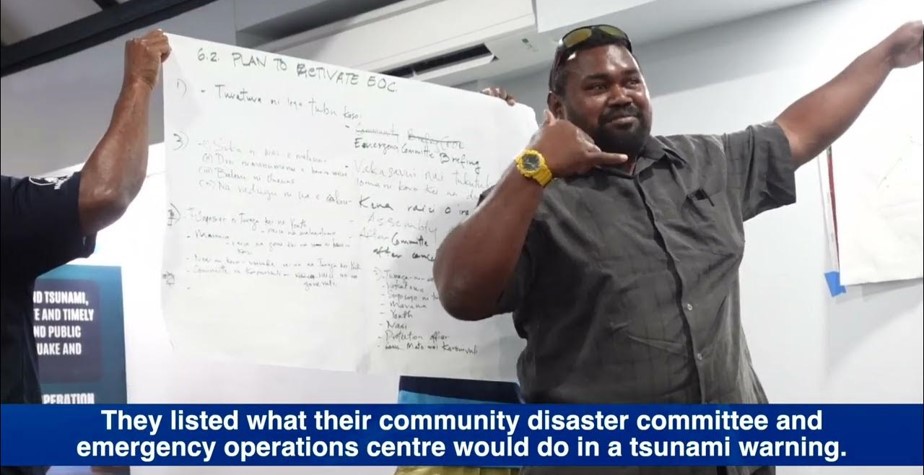
Resources:
- Budgeting for accessibility and reasonable accommodations (CBM Global, 2025)
- Study on disability extra costs in humanitarian crisis in Burkina Faso (CBM Global, FEBAH & Solidev, 2022)
- Disability-inclusive Cash Assistance: Learnings from practice in humanitarian response (CBM Global, 2021)
- Tips on engaging OPDs in DRR (CBM Global, Fiji Disabled Peoples Federation & Disabled Child Foundation, 2025)
- Tipsheet on how to undertake a disability-inclusive Community Risk Assessment (CBM Global, Disabled Child Foundation & Caritas Bangladesh, 2025)
Want to learn more?
Join our DiDRR e-learning course on Kaya Connect, which equips participants with the knowledge and tools to invest in and advance efforts that address the barriers faced by people with disabilities. Developed with partners including UNDRR, African Disability Forum, Disabled Child Fund and others, the course has reached over 1,600 participants globally, including 551 people with disabilities taking part. With strong engagement and practical, scenario-based learning, it supports inclusive planning and budgeting for DRR. Join the movement to make disaster preparedness truly inclusive.

To enroll, you may sign-up to Kaya Connect via this link: DiDRR e-Learning course
https://cbm-global.org/news/funding-disability-inclusion-in-drr
Related News
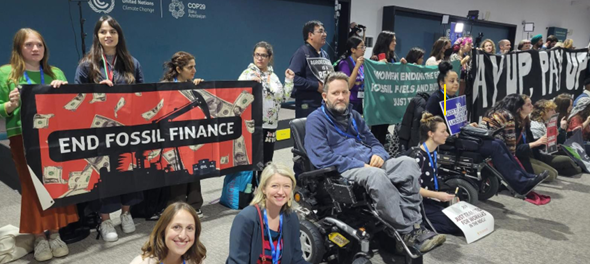
One in Five Is Not Enough: The gains on Disability Inclusion have not gone far enough
One in Five Is Not Enough: The gains on...
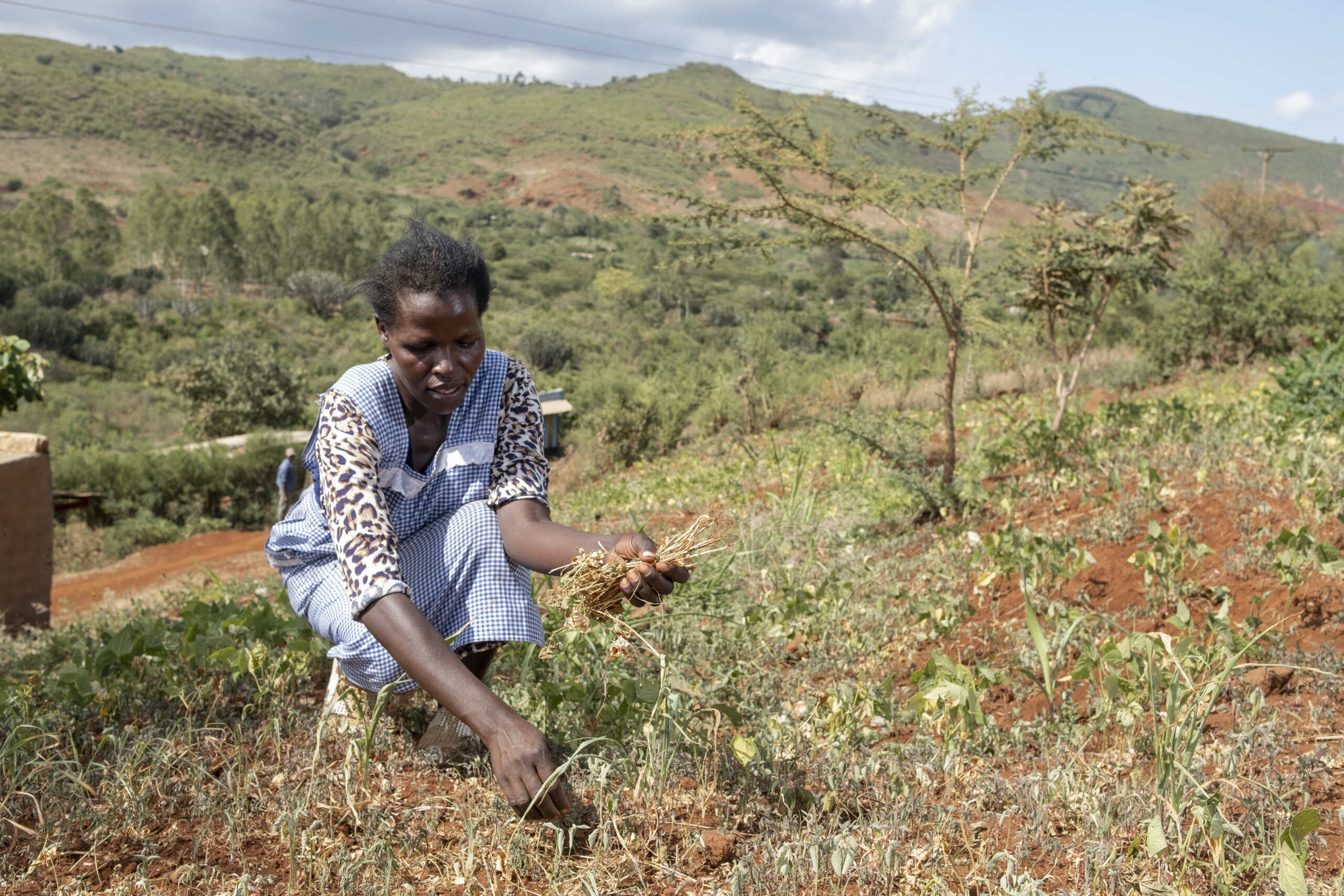
COP30 Is a Turning Point for Disability-Inclusive Climate Action
As the world gathers in Belém, Brazil, from 10–21 November 2025 for COP30, the message from...
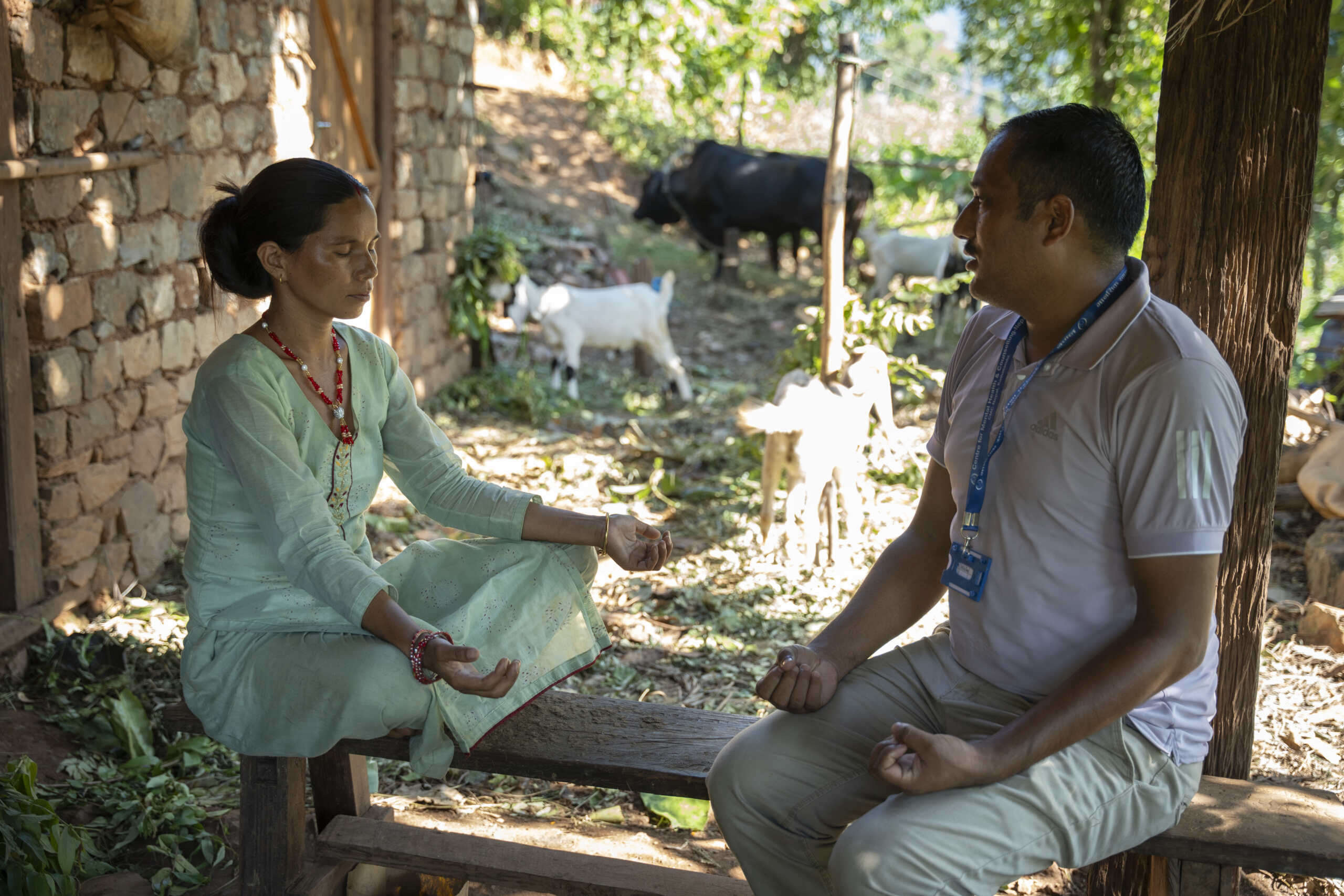
The Vital Role of Mental Health and Psychosocial Support in Humanitarian Emergencies
Why Mental Health Cannot Be Overlooked When disasters strike, whether...
